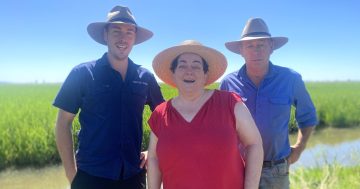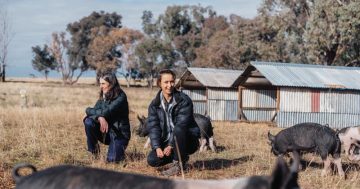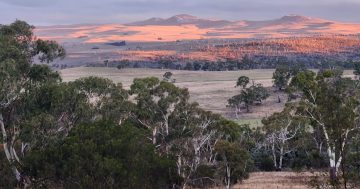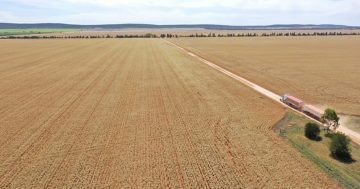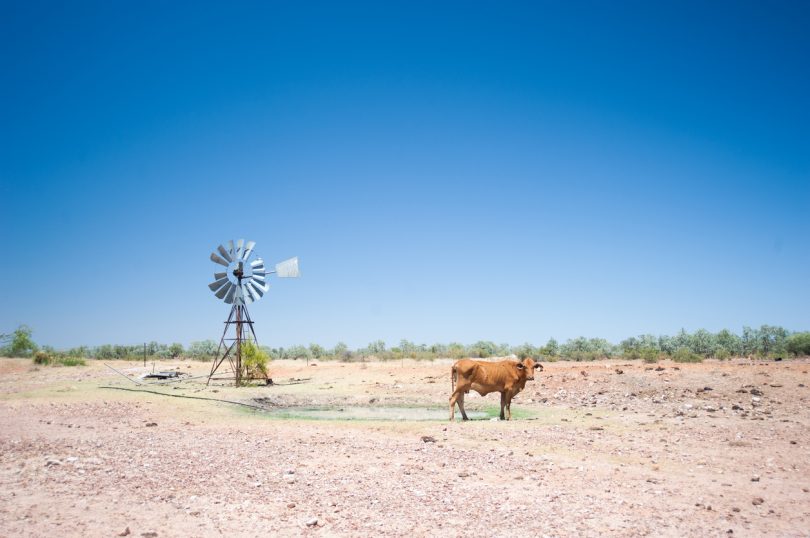
Climate change means droughts will be more frequent. Photo: File.
Last week was dominated by emergencies – on climate, water, the drought and bushfires. The message across the board was that a business as usual approach is not tenable.
Yet that is what we got as the Morrison Government rolled out yet another drought package, a billion dollars’ worth, so farmers could borrow even more money and struggling shires could keep people in work and businesses afloat.
All the while hoping and praying it will rain, because when it does we can forget about it until next time.
But drought will be upon us again before we know it, for longer, and for more intense periods. Because whether Scott Morrison, the right-wing of the Liberal Party he needs to appease or the Murdoch press like it or not, climate change is real and its impacts on Australia’s food and fibre production areas will be devastating.
A proper climate strategy that contributes to a global campaign to cut greenhouse emissions and avert catastrophe is needed.
Part of that strategy should be an acceptance that the way we conduct agriculture in this country can no longer be business as usual.
The green revolution with its chemical fertilisers, herbicides and pesticides is devouring its children and laying waste to the land on which farmers and their customers depend.
The diversion of what water there is for giant irrigated enterprises, particularly cotton at the top of the Murray Darling system, is causing ecological mayhem and leaving productive farmland at the mercy of drought.
The loosening of regulation in Queensland and NSW has led to an explosion of land clearing for cropping and grazing that will yield short-term profits but eventually degrade the land, increase erosion and the run-off of fertiliser and chemical-laden water into streams and, in the case of North Queensland, the ocean and on to the Great Barrier Reef.
It is an apocalyptic scenario that could see a great retreat as land becomes unproductive, communities die and the desert claims more of what is already an arid country.
But there are answers to the problem of how we can really drought-proof the land and maintain its health, and if we make it a priority we can find and develop many more.
Sustainable agriculture, regenerative farming, call it what you will, but it comes down to working with the environment not imposing an industrial system on the land that eventually sucks the life out of it.
Last week RiotACT published a positive story amid the gloom about farmers in the region adopting regenerative practices, including the pioneering work of Peter Andrews, and Tony Coote at the Mulloon Institute near Bungendore.
It’s not that there isn’t enough rainfall, says Mulloon Creek Farms manager Michael Fitzgerald, it’s that the land doesn’t hold on to it.
The idea is to replicate the original landscape of slow-moving reedy creeks and billabongs so the water seeps through the land rather than runs off, or is captured in dams that are just evaporation dishes.
Building soil fertility and structure so it will hold water is also essential, as well as biodiversity with a range of grasses and vegetation not just monocultures of pasture.
The organic and biodynamic farming movement has always held that everything starts with the soil but in Australia, many soils are old and depleted. So instead of just pouring on chemical fertilisers, farmers need to nurture the land with compost or compost preparations to build humus and bacteria.
Instead of sheep and cattle being a problem due to overgrazing, they can be a solution, according to those advocating grazing strategies that mimic the wild herd animals moving in a tight bunch across the landscape, leaving behind a protective layer of trampled dung, dust and soil. This traps carbon, breaks down methane and builds soil fertility so more grasses can be produced.
More trees, lots more, need to be planted anywhere they can to provide wind breaks, prevent run-off and erosion, and create micro-climates. They should be crowning every hilltop.
Many farmers and land managers are pursuing these practices or looking for answers but many more are trapped in a way of thinking or economic bind.
They need Government help to transform their methods and their farms, our agricultural colleges need to adopt regenerative farming techniques and the CSIRO needs to be marshalled to make agriculture an urgent research priority again.
It will take time. As one regenerative farmer said recently, “You have to think in decades”.
And despite the organics movement growing into a multi-billion dollar industry, conventional chemical-based farming remains entrenched and seen as the only way to achieve big yields and profitability, and put affordable food on the shelf.
But without change, how long before the price of food rises anyway?
We have had 40 years to think about climate change, longer when it comes to drought, yet it is a political landscape littered with short-term fixes, policy on the run and an unwillingness to face reality.
Yes, no one begrudges help for farm communities that are hurting but now is the time to start looking at practical long-term solutions, at healing the land before it is too late, and we struggle to feed ourselves let alone the rest of the world.
Original Article published by Ian Bushnell on The RiotACT.







